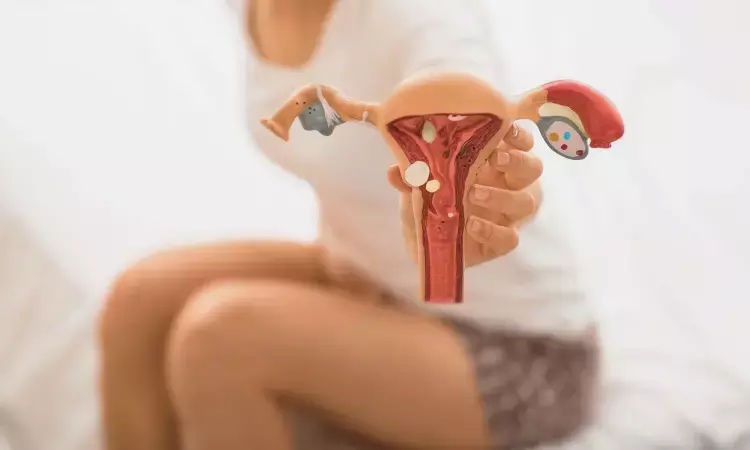- Home
- Medical news & Guidelines
- Anesthesiology
- Cardiology and CTVS
- Critical Care
- Dentistry
- Dermatology
- Diabetes and Endocrinology
- ENT
- Gastroenterology
- Medicine
- Nephrology
- Neurology
- Obstretics-Gynaecology
- Oncology
- Ophthalmology
- Orthopaedics
- Pediatrics-Neonatology
- Psychiatry
- Pulmonology
- Radiology
- Surgery
- Urology
- Laboratory Medicine
- Diet
- Nursing
- Paramedical
- Physiotherapy
- Health news
- Fact Check
- Bone Health Fact Check
- Brain Health Fact Check
- Cancer Related Fact Check
- Child Care Fact Check
- Dental and oral health fact check
- Diabetes and metabolic health fact check
- Diet and Nutrition Fact Check
- Eye and ENT Care Fact Check
- Fitness fact check
- Gut health fact check
- Heart health fact check
- Kidney health fact check
- Medical education fact check
- Men's health fact check
- Respiratory fact check
- Skin and hair care fact check
- Vaccine and Immunization fact check
- Women's health fact check
- AYUSH
- State News
- Andaman and Nicobar Islands
- Andhra Pradesh
- Arunachal Pradesh
- Assam
- Bihar
- Chandigarh
- Chattisgarh
- Dadra and Nagar Haveli
- Daman and Diu
- Delhi
- Goa
- Gujarat
- Haryana
- Himachal Pradesh
- Jammu & Kashmir
- Jharkhand
- Karnataka
- Kerala
- Ladakh
- Lakshadweep
- Madhya Pradesh
- Maharashtra
- Manipur
- Meghalaya
- Mizoram
- Nagaland
- Odisha
- Puducherry
- Punjab
- Rajasthan
- Sikkim
- Tamil Nadu
- Telangana
- Tripura
- Uttar Pradesh
- Uttrakhand
- West Bengal
- Medical Education
- Industry
Study Links Chronic Endometritis to Abnormal Uterine Bleeding; Antimicrobial Therapy Shows Promise

Italy: A recent prospective observational study published in the International Journal of Gynecology & Obstetrics has revealed a high prevalence of chronic endometritis (CE) in women with nonstructural abnormal uterine bleeding (AUB), with 70.3% of participants diagnosed with the condition.
The study highlights the significant role of CE in abnormal bleeding patterns in the absence of structural uterine abnormalities. Targeted antimicrobial therapy led to notable improvements in bleeding outcomes, with women cured of CE experiencing fewer bleeding days, better pictorial blood assessment chart scores at 3 and 6 months, and higher serum hemoglobin and ferritin levels than those with persistent CE. These findings emphasize the potential benefits of antimicrobial treatment in managing nonstructural AUB.
The causal relationship between chronic endometritis and nonstructural abnormal uterine bleeding remains inadequately explored, necessitating further investigation. Therefore, Pierpaolo Nicolì from the University of Bari “Aldo Moro,” Policlinico of Bari, Bari, BA, Italy, and colleagues aimed to assess the prevalence of chronic endometritis in women with nonstructural abnormal uterine bleeding and evaluate the impact of CE treatment on menstrual blood loss patterns.
For this purpose, the researchers conducted a prospective study between 2022 and 2024 at the University of Bari, Italy, involving women aged 20–45 with nonstructural AUB undergoing hysteroscopy. Chronic endometritis was diagnosed based on hysteroscopic and histologic/immunohistochemical (HIS/IHC) criteria. Women with CE received culture-guided therapy, and cure was confirmed by triple negativity (hysteroscopy, HIS/IHC, and culture) in Group A. If CE persisted, up to three therapy courses were administered (Group B). Participants completed a bleeding characteristics questionnaire and had serum hemoglobin and ferritin levels assessed at enrollment and post-treatment.
The following were the key findings of the study:
- Chronic endometritis was diagnosed in 70.3% of women with nonstructural abnormal uterine bleeding (AUB) enrolled in the study.
- Among the 102 CE patients, 81 (79.4%) showed CE resolution after therapy (group A), while 21 (20.6%) had persistent CE (group B).
- The duration of heavy bleeding before treatment (baseline) was similar in both groups.
- At the end of treatment, group A showed significant reductions in days of heavy bleeding, spotting, and Pictorial Blood Assessment Chart (PBAC) scores compared to their baseline and group B.
- Serum hemoglobin and ferritin levels were significantly higher in women with resolved CE (group A) than those with persistent CE (group B).
- PBAC scores in group A remained significantly improved 3 and 6 months after treatment, indicating persistent benefits.
- Both univariate and multivariate regressions revealed a significant association between the cure of CE and reduced bleeding in patients.
The study highlights a high prevalence of chronic endometritis among women with nonstructural abnormal uterine bleeding. Notably, targeted antimicrobial therapy proved effective, with CE cure leading to marked and sustained improvements in bleeding patterns, emphasizing the clinical value of identifying and treating CE in this population.
Reference:
Cicinelli, E., Nicolì, P., Vimercati, A., Cicinelli, R., Marinaccio, M., Matteo, M., & Vitagliano, A. High prevalence of chronic endometritis in women with nonstructural abnormal uterine bleeding and benefits of antimicrobial treatment on blood loss pattern: A prospective, observational study. International Journal of Gynecology & Obstetrics. https://doi.org/10.1002/ijgo.70115
Dr Kamal Kant Kohli-MBBS, DTCD- a chest specialist with more than 30 years of practice and a flair for writing clinical articles, Dr Kamal Kant Kohli joined Medical Dialogues as a Chief Editor of Medical News. Besides writing articles, as an editor, he proofreads and verifies all the medical content published on Medical Dialogues including those coming from journals, studies,medical conferences,guidelines etc. Email: drkohli@medicaldialogues.in. Contact no. 011-43720751


